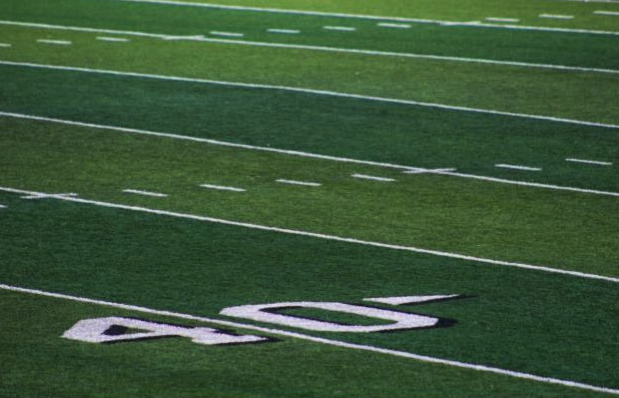Fresh talent fuels every NFL season, and the 2025 Los Angeles Rams are no exception. General manager Les Snead’s latest draft, plus targeted undrafted additions, arrives as several veteran deals reach expiry.
Depth questions at tight end, edge, and linebacker, along with future backfield uncertainty, create immediate openings. This article spotlights six Rams rookies, explaining college output, schematic fit, and possible 2025 snap pathways.
By the end, you’ll know who could splash first and how Los Angeles can cultivate lasting returns. Early development will shape Los Angeles’ playoff ceiling.
Ferguson Brings Reliable Hands to the Tight End Corps
Sean McVay has chased a seam-stretching tight end since missing Brock Bowers in 2024. Second-round rookie Terrance Ferguson finally supplies that dimension without compromising blocking fundamentals. Smart bettors reviewing college football odds last autumn will have noted that Oregon’s offense kept drives alive whenever Ferguson moved the chains.
He graduated with 134 receptions, 1,537 yards, and 16 touchdowns (records for the position). His senior efficiency, 43 catches, 591 yards, three scores in 12 appearances, proved resilience despite illness-related absences.
With Tyler Higbee entering a contract crossroads and Colby Parkinson facing competition, early targets are available.
McVay’s play-action rewards tight ends who settle into soft zones and churn extra yards; Ferguson’s balance through traffic and broad catch radius suit those middle-field digs and deep crossers. Snap counts should steadily climb after the bye, and he could eclipse veteran reps by season’s end.
Stewart’s Burst Could Spark the Edge Rotation
Michael Hoecht’s offseason departure left a rotational void opposite Jared Verse and Byron Young. Third-round pick Josaiah Stewart carries the production profile to seize that chance quickly.
After transferring from Coastal Carolina to Michigan, he logged a team-leading 13 tackles for loss last season. His 8.5 sacks also demonstrated closing burst, while captaincy validated character and communication traits that Los Angeles values.
Defensive coordinator Chris Shula rotates edges wide and in sub-packages, demanding stop-run discipline plus inside counters.
Stewart’s squat frame, 6-foot-1 and 249 pounds, helps anchor against pulling guards yet explodes around taller tackles. Early snaps should arrive on third downs, where he converts speed into rush and chases screens.
Pairing him with Turner’s interior push could isolate centers, creating favorable one-on-ones by midseason. If production translates, Stewart’s contract control offers cap relief when Verse becomes extension-eligible in 2026.
Hunter Adds Home-Run Threat to the Backfield
Kyren Williams has rushed for consecutive 1,000-yard seasons, yet his rookie contract expires next March. Fourth-round runner Jarquez Hunter provides insurance now and leverage later.
At Auburn, he piled up 3,371 yards, ranking fourth after Bo Jackson, Carnell Williams, and James Brooks. Last season’s 1,201 yards and eight touchdowns earned first-team All-SEC, demonstrating feature-back endurance.
Hunter’s low center of gravity, 5-foot-9 and 204 pounds, slashes through creases before linebackers react. Film shows consistent acceleration out of zone-read cuts, a trait McVay favors for outside-stretch concepts.
Special-teams work grants Hunter pass-protection reps and trust with running-backs coach Thomas Brown. Expect screens that showcase his vision and limit mileage behind Williams and Blake Corum. If extension talks stall, Hunter could enter the 2026 camp as the affordable lead option.
Hamilton Fortifies an Ascending Interior Line
Pressure up the middle has driven recent Rams defensive successes, and Ty Hamilton amplifies that formula. Fifth-round pick Hamilton started every game, recording 51 tackles, six for loss, and 3.5 sacks.
Playing next to Braden Fiske and breakout star Kobie Turner, Hamilton can rotate without immediate double-team attention. At 6-foot-3, 299 pounds, he absorbs reach blocks, freeing linebackers and conserving Turner’s explosive third-down snaps.
His older brother DaVon earned a Jaguars extension, offering a professional blueprint Hamilton has studied closely. College film shows pad-level discipline, suiting shifty zone-heavy NFC West matchups against relentless divisional motions.
Goal-line duties should come early, with reps rising if Poona Ford shifts to full-time nose. A credible rookie season would allow management to allocate future cap dollars toward secondary reinforcements.
Paul’s Range Upgrades Second-Level Speed
Ernest Jones anchors the Rams’ linebackers, yet depth behind him relied on journeymen and special-teamers. Fifth-round selection Chris Paul Jr. injects fresh downhill violence and needed coverage agility into that mix.
After transferring from Arkansas to Mississippi, Paul paced the Rebels with 88 tackles last season. His 11 tackles for loss and 3.5 sacks highlighted blitz timing and gap instincts within a record-setting defense.
At 6-foot-1, 222 pounds, he stays compact through traffic, slipping second-level blocks without ceding leverage. Shula often pairs linebackers with simulated-pressure looks, asking them to mug gaps then bail into hook zones.
Paul executed similar assignments under Pete Golding, suggesting a short acclimation curve. If he seizes sub-package snaps by November, the front office can divert 2026 resources toward edge depth.
Mumpfield Offers Depth and Downfield Craft
Los Angeles boasts star Puka Nacua and veteran Davante Adams, yet slot depth lost Cooper Kupp’s precision.
Seventh-round receiver Konata Mumpfield arrives with polished route stems and reliable hands at the boundary or inside. The Pitt product caught 154 passes for 1,940 yards and 11 touchdowns across three collegiate seasons. Last year, he averaged 15.6 yards per catch despite a compact 5-foot-11, 186-pound frame.
McVay often motions receivers to create stacks; Mumpfield’s burst helps him slip press coverage. His background at Akron and Pitt suggests adaptability to advanced playbook complexity and multiple quarterback cadences.
Special teams again provide early runway, likely as a punt gunner, where straight-line speed immediately translates. A credible rookie cameo would let McVay vary three-receiver sets, reducing Adams’s snaps and extending his prime.
How Los Angeles can Maximize its Rookie Class
Rookies rarely decide championships alone, yet their cost-controlled growth shapes the Rams’ medium-term trajectory. McVay’s staff has historically streamlined playbooks, letting young talent operate fast instead of thinking. Applying that principle, via joint practices and scripted preseason drives, should speed Ferguson and Hunter’s transitions.
Rotational snap plans, communicated weekly, will keep Stewart, Hamilton, and Paul fresh while sharpening assignment clarity. Meanwhile, carving defined special-teams roles for Mumpfield sustains roster spots without forcing premature offensive volume.
Front-office alignment matters too; midseason extensions for Williams or Verse must acknowledge looming rookie escalations.
If development stays on schedule, Los Angeles preserves cap flexibility and field speed through 2027’s window. The blueprint is clear: teach, rotate, and trust, then watch fresh legs power a renewed postseason push.
*The information provided is based on available data and analysis as of 2025/08/05 and is subject to change.


